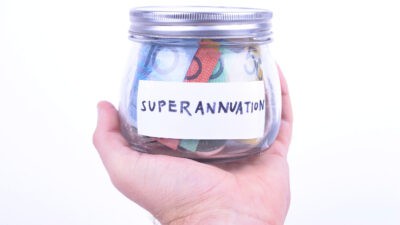Most Australians would be aware that they have a superannuation fund. After all, that's where 11% of our salary gets deposited every time we get paid – certainly not a trivial sum of cash. But if you asked most Australians where their super is actually invested, whether that be in ASX shares or not, I'd wager that most would have no clue.
Normally, when we start our first, or even a new job, we're asked what super fund we'd like our money deposited into. You will then be likely asked by whatever fund you've chosen which risk profile you'd like to be in. The most common option is a 'balanced' fund. But there are usually other choices such as 'conservative' or 'high growth' available.
And for most Australians, that's where the dedicated thought tends to end – at least until you reach a certain age and turn your thoughts to retirement planning.
But I think it's a good idea for every Australian to have at least a fair idea of where their money is being invested. After all, your super fund is the best shot at a comfortable retirement for most of us. So paying attention to where 11% of your salary is going is probably a sound move.
So how do you know which ASX shares your superannuation is invested in?
Finding the ASX shares your super fund is invested in
For most people, your first and last stop will be the superannuation fund itself.
Every super fund runs a slightly different investment portfolio for its members. But for most superannuation funds, you can bet that a good chunk of your money is being used to buy shares – both ASX shares and international stocks.
Super funds have a duty to maximise the potential returns of their members, accounting for their risk profiles. And the asset class that consistently delivers the highest returns are ASX and international shares.
As an example, we'll look at the largest super fund in Australia – AustralianSuper.
Like almost all funds, AustralianSuper offers a range of different investing options. But the most popular is the 'balanced fund'.
Balanced funds are named due to their exposure to a variety of different asset classes. These typically include ASX and international shares but also cash, bonds and property. This is done to balance the search for high returns with a desire to reduce portfolio volatility.
In AustralianSuper's case, the fund tells us that currently (as of 30 September), its balanced superannuation portfolio is weighted 21.2% to ASX shares. A further 25.5% is weighted to international shares.
You have to dig a little deeper to find out exactly which investments these asset classes are made up of. But the fund's most recent data tells us that the largest holdings in the AustralianSuper balanced portfolio come down to BHP Group Ltd (ASX: BHP), Commonwealth Bank of Australia (ASX: CBA), CSL Limited (ASX: CSL), Microsoft Corporation (NASDAQ: MSFT) and National Australia Bank Ltd (ASX: NAB).
Other significant holdings include Amazon.com Inc (NASDAQ: AMZN), Woodside Energy Group Ltd (ASX: WDS) and Woolworths Group Ltd (ASX: WOW).
Every portfolio is different
AustralianSuper employs an actively managed strategy, meaning a team of investors decide which individual stocks will be included in its super funds. Both other superannuation providers might offer a simpler approach that just uses index funds and exchange-traded funds (ETFs). Indeed, many give us the choice of which strategy to pursue.
So if you're wondering which ASX shares are in your own super portfolio, head to its website. And if that fails, give your fund a call. Chances are, you'll be able to find out without too much hassle.







